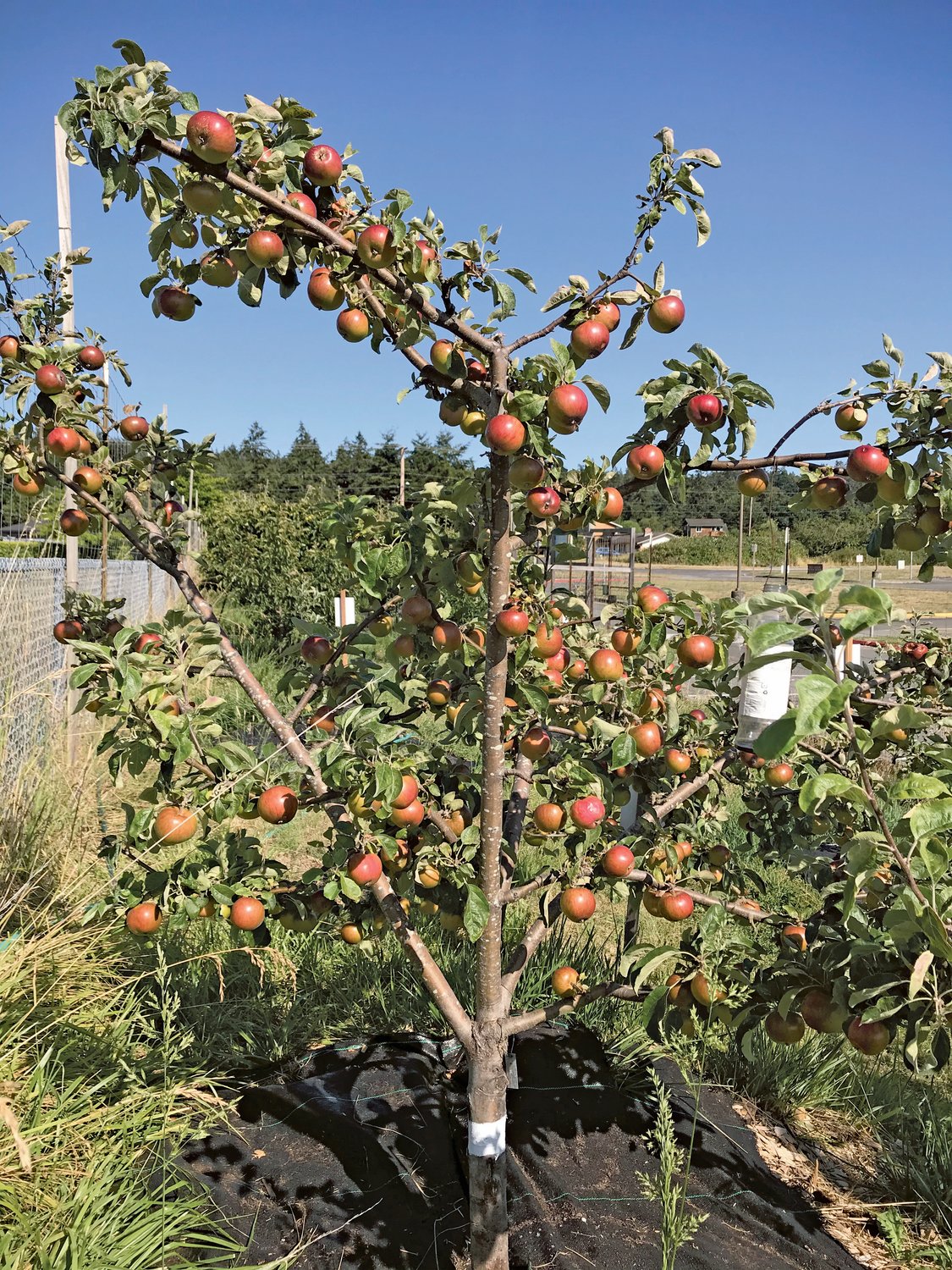Good pruning is both art and science. According to WSU Extension, “The science of pruning a tree means being aware of how light affects its growth, and how its structure develops over time. The …
This item is available in full to subscribers.
We have recently launched a new and improved website. To continue reading, you will need to either log into your subscriber account, or purchase a new subscription.
If you had an active account on our previous website, then you have an account here. Simply reset your password to regain access to your account.
If you did not have an account on our previous website, but are a current print subscriber, click here to set up your website account.
Otherwise, click here to view your options for subscribing.
* Having trouble? Call our circulation department at 360-385-2900, or email our support.
Please log in to continue |
|

Good pruning is both art and science. According to WSU Extension, “The science of pruning a tree means being aware of how light affects its growth, and how its structure develops over time. The art lies in pruning a tree so that the balance of growth and productivity is esthetically pleasing to you.”
Let’s start with a few basics: Pruning should match the plant’s genetically predetermined size and growth habit. A smaller dose is usually better. Removing too much of what a plant needs to feed itself can lead to overgrowth, weak growth, disease, or eventual death. If a plant is too large for its space, removing or replacing it is a better long-term strategy than over-pruning.
The first step, which can be done just about anytime, is to remove the “4 D’s” — dead wood, diseased foliage, damaged branches, or deranged (crossing or wrong-way) branches.
Make the smallest, cleanest cuts possible to minimize damage to the plant. Cut just above or outside the “branch collar” (the small bump where a branch attaches to its main stem). The branch collar contains cells that help the plant compartmentalize damage from pruning cuts.
A general rule of thumb is to prune a plant during its dormant season, but many plants, including fruit trees, can benefit from structural clean-up in summer.
As growth slows down in hotter and drier weather, plants like lilac, dogwood, and maple can be pruned with less danger of fungal or bacterial infection. For Japanese maples, you can get underneath the tree and prune out small branches from the inside to let in filtered light. Thin out regrowth from previous pruning cuts to encourage growth of sturdier branches.
For plants that are prone to suckering, like viburnum, magnolia, birch, hawthorn, flowering cherry, and willow, you can start a program to remove excessive growth over time. One approach is to remove about 10 percent in summer and another
10 percent in late winter. It’s good to note that while plants have different pruning “budgets,” a general guideline is to remove no more than 25 to 30 percent of a tree’s live wood in any one year.
For fruit trees, Doug Van Allen, a local Master Gardener and home fruit grower, advises that summer pruning allows more air and sunlight to reach the fruit to improve size and sweetness prior to harvest. This month, he is working with a team of community volunteers to prune the apple, pear, plum, fig, and other trees at Port Townsend’s Blue Heron School Orchard, and at our local food bank gardens.
The volunteers open up the trees’ frameworks by thinning and removing dead wood and most of the watersprouts (rapid, unwanted growth from dormant buds). Doug emphasizes that summer pruning of mature stone fruit trees like peach, plum, apricot, and cherry helps reduce the risk of fungal disease while promoting higher sugar content.
It’s also a good time to prune espaliers (trees trained to grow flat against a support), tying down branches to create the desired form. Doug advises, “at this time of year with lots of growth, you can create nice fruit spurs close to the flat plane of the tree, letting in more light and helping shape the tree.”
The same principles apply in summer, and at any time of year — make clean pruning cuts to increase sunlight and air circulation to the center of the plant, and to encourage the form that is pleasing to you.
For more insights on fruit tree pruning in Western Washington, check out some resources from WSU: https://extension.wsu.edu/maritimefruit/pruning-tree-fruit-the-basics/.
Plant Amnesty, a Seattle-based nonprofit (plantamnesty.org), has a series of helpful short pruning videos in English and Spanish covering general principles for trees, shrubs, and vines. Visit www.youtube.com/user/plantamnesty to explore.
Volunteer Master Gardeners are available to answer questions from the community about water-wise gardening or any other aspect of the home garden. Visit our online Plant Clinic at https://extension.wsu.edu/jefferson/gardening-2/plant-clinic/.
(Barbara Faurot is a Jefferson County Master Gardener and Master Pruner, working with other volunteers who serve as community educators in gardening and environmental stewardship.)